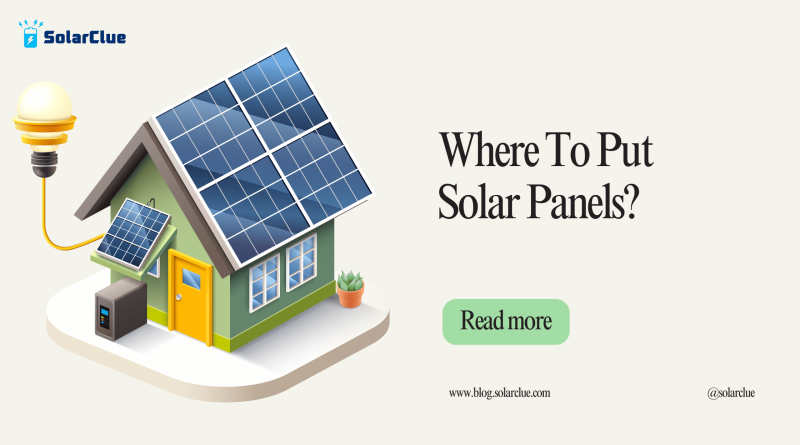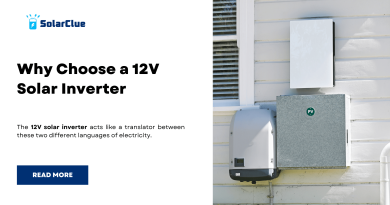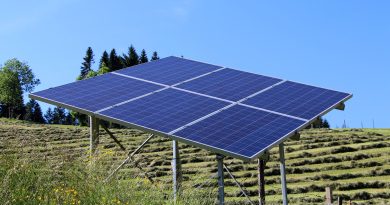Where To Put Solar Panels?
Solar panel placement is a critical factor in maximizing energy production and efficiency. This blog covers the factors affecting solar panel performance, how to assess roof suitability, tips for maximizing sunlight exposure, and alternative placement options.
Table of Contents
- 1 The Importance of Solar Panel Orientation and Tilt
- 1.1 Assessing Roof Suitability for Solar Panel Installation
- 1.2 Key Factors in Optimal Solar Panel Placement
- 1.2.1 Identifying and Mitigating Shading Issues
- 1.2.2 Optimizing Solar Panel Placement for Different Climates
- 1.2.3 Alternative Placement Options for Solar Panels
- 1.2.4 Balancing Aesthetics and Energy Production
- 1.2.5 The Role of Solar Panel Tracking Systems
- 1.2.6 Tools and Software for Solar Panel Site Assessment
- 1.2.7 Legal and Permitting Considerations for Solar Panel Placement
- 1.3 FAQs
The Importance of Solar Panel Orientation and Tilt
The orientation and tilt of solar panels are crucial for optimizing their performance. Ideally, solar panels should face true south in the Northern Hemisphere and true north in the Southern Hemisphere to maximize sunlight exposure. East or west-facing panels can still be effective but may produce less energy. The tilt angle of the panels should generally match the latitude of the installation location. Adjusting the tilt angle seasonally—steeper in winter and shallower in summer—can further enhance energy capture.
Assessing Roof Suitability for Solar Panel Installation
Evaluating the roof’s condition is essential before installing solar panels. Ensure the roof can support the weight of the panels and mounting equipment. The type of roofing material, such as asphalt shingles, metal, or tile, may affect installation complexity and cost. Additionally, measure the available roof space to determine the number of panels that can be installed. The shape and slope of the roof also influence panel placement and efficiency.
Key Factors in Optimal Solar Panel Placement
| Factor | Description | Considerations |
|---|---|---|
| Orientation | Direction the panels face. | True south in Northern Hemisphere, true north in Southern Hemisphere. |
| Tilt Angle | Angle of the panels relative to the ground. | Should match latitude; seasonal adjustments can enhance performance. |
| Roof Condition | Structural integrity and material of the roof. | Ensure roof can support panels; consider installation complexity and cost based on roof material. |
| Roof Space | Available area for panel installation. | Measure space to determine number of panels; consider shape and slope. |
| Shading | Potential obstructions blocking sunlight. | Identify and mitigate shading from trees, buildings, chimneys, etc. |
| Climate | Local weather conditions. | Adjust placement and panel type based on sunny or cloudy climates. |
| Ground-Mounted Systems | Panels installed on the ground. | Requires sufficient space; can be adjusted for optimal tilt and orientation. |
| Carports and Pergolas | Dual-function structures providing shade and power. | Design to blend with architecture; provide shelter and energy production. |
| Aesthetics | Visual appeal of the installation. | Choose panel colors and mounting styles that blend with existing structures; balance between aesthetics and efficiency. |
| Tracking Systems | Devices that adjust panel orientation to follow the sun. | Single-axis and dual-axis trackers can increase efficiency but may involve higher costs. |
| Assessment Tools | Devices and software for site evaluation. | Use solar pathfinders and digital tools like PVWatts and HelioScope for detailed assessments. |
| Legal and Permitting | Regulatory requirements for installation. | Check local regulations and HOA rules; explore incentives and rebates to reduce costs. |
Identifying and Mitigating Shading Issues
Shading can significantly impact solar panel performance. Identify potential sources of shade such as trees, buildings, and chimneys. Consider how shading patterns change with the seasons due to the sun’s angle. Mitigation strategies include trimming nearby trees and using technologies like microinverters and power optimizers to reduce the effects of shading on solar panel performance.
Optimizing Solar Panel Placement for Different Climates
The local climate plays a significant role in solar panel performance. In sunny climates, focus on maximizing panel exposure to direct sunlight. In cloudy or rainy climates, optimize the tilt angle to capture the maximum amount of diffuse light. Using high-efficiency panels can help offset lower sunlight levels in such conditions.
Alternative Placement Options for Solar Panels
Ground-mounted systems offer flexibility in placement and can be adjusted for optimal tilt and orientation. These systems require sufficient ground space and may involve additional permitting. Carports and pergolas provide dual functionality by offering shade and shelter while generating solar power. These structures can be designed to blend with the existing architecture for aesthetic appeal.
Balancing Aesthetics and Energy Production
Balancing aesthetics and energy production is essential for many homeowners. Choose panel colors and mounting styles that blend with the roof and overall architecture. Decide whether to prioritize energy production or aesthetics, or find a balance between the two. A well-planned design can achieve both goals without compromising efficiency.
The Role of Solar Panel Tracking Systems
Solar panel tracking systems can significantly increase energy production. Single-axis trackers follow the sun’s movement from east to west, while dual-axis trackers adjust both horizontally and vertically to maximize exposure throughout the day. These systems can boost energy production by 10-25% compared to fixed systems, though they may involve higher installation and maintenance costs.
Tools and Software for Solar Panel Site Assessment
Various tools and software are available to assess the suitability of a site for solar panel installation. Solar pathfinders help determine the best placement and orientation by analyzing shading and sunlight exposure.
Legal and Permitting Considerations for Solar Panel Placement
Understanding legal and permitting requirements is crucial for a smooth installation process. Check with local authorities for specific permitting requirements and ensure compliance with homeowner association rules and guidelines. Research federal, state, and local incentives for solar installations, and explore rebates and programs offered by local utility companies to reduce costs.
By carefully considering these factors, you can optimize the placement of your solar panels to maximize energy production, efficiency, and aesthetic appeal, regardless of your specific location and climate conditions.
Here at SolarClue®, we offer a smart, practical, and “beautiful” solution. You will be answered for all the questions related to Solar.
We provide all kinds of brands that are the Best Solar panels in India.
If you are the one who is planning for the solar power system. Don’t hesitate to contact our team!
Looking forward to empowering you with solar energy, just like hundreds of our other clients!
FAQs
1. What direction should solar panels face for optimal performance?
Solar panels should face true south in the Northern Hemisphere and true north in the Southern Hemisphere to maximize sunlight exposure.
2. Can solar panels work in shaded areas?
Solar panels can still work in shaded areas but at reduced efficiency. Using technologies like microinverters and power optimizers can help mitigate the effects of shading.
3. How does the tilt angle of solar panels affect their performance?
The tilt angle should generally match the latitude of the installation location. Adjusting the tilt angle seasonally can further enhance energy capture.
4. What are the alternative placement options if my roof is unsuitable for solar panels?
Alternative options include ground-mounted systems, carports, and pergolas, which offer flexibility in placement and can be adjusted for optimal performance.



